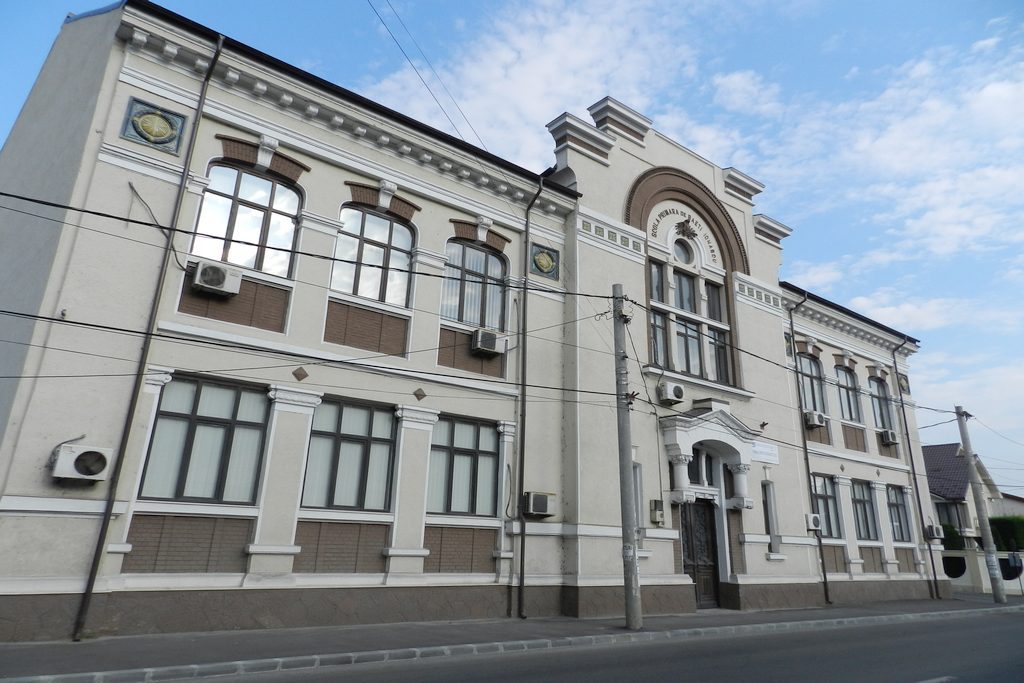

Born in 1725, Ionaşcu Cupeţu was one of the most prosperous merchants in the county, managing to raise a substantial fortune, which donated it, entirely to the city Slatina.The entire hoard amassed by Ionaşcu Cupeţu in his 71 years of life was left to the citizens of Slatina, to which the merchant had left, as is noted in the historic of the cathedral “Church for the soul, the school for the mind, the hospital for body and drinking fountains necessary for vitality.”
At the end of the eighteenth century, from the money of Ionaşcu Cupeţu is established a school, where boys from poor families received free training. The “Ionaşcu” School was one of the best schools in the country, which has prepared dozens of generations of students, with high reputation in the national civilization. “The high school from the valley,” as it was known, functioned with small interruptions until 1894, when is demolished and another building with a special architecture,is constructed – “The “Ionaşcu” school for boys No.1.
Since 1921, the Industrial Apprentices School receives approval from the Ministry of Education to operate in the same building. School of church singers had, initially the approval of the Ministry of Public Education in 1923. MIP, however, by the General Directorate of Primary Education, did no longer allow, the functioning of this school in the “Ionaşcu” building, because there was functioning, also the School for Girls No. 1.
This school founded in 1846 still did not have its own locations. In 1938, the institutors P. Roșu and M. Bratu organized a school museum to ” retain the important moments in the evolution of Romanian education”. The “Ionaşcu” School also benefit from the fund left, in 1866 by Ion Varipatti. Varipatti was the great landowner who had left to the schools in Slatina “all his moving fortune.” The “Ionaşcu” School , like other schools, also was concerned with raising their own funds. The easiest form of fundraising were the school festivities with public. Since 1860 The Library of the”Ionașcu” School was also the public library of the city. The inventory of books, done this year, started with “Doppia Scripturae” by D. Iarcu, and ended at no. 64 with six new maps.
In the years 1927-1928, here had its headquarters,also the Cultural Circle Slatina no. 1, led by Dionisie Popescu, which included the boys Schools no. 1 and 2 and the girls Schools, no. 1 and 2, as well as the “Gardens” for children, such as “Garden Prince Mircea”. The “Ionaşcu” School gave valuable people for the society, for example: Th. Burcă, Th. Dobrescu, D. D. Polihron, C. T. Dragomir, Mihăiescu Florin or D. Popovici. Theodor Burcă was a famous sculptor. Theodor Dobrescu was aeronautical engineer.
He designed, in 1908, a “MINIPLANE” called “aircraft”, patented by the Office of Inventions Bucharest. Dumitrescu Dumitru Polihron, general, professor at the Superior School of War. Caius Traian Dragomir, writer, scientific researcher, doctor of medical sciences, Ambassador of Romania in Paris. Mihailescu Florin, Doctor of Philology, literary critic, lecturer at the Faculty of Romanian Language and Literature – Bucharest, professor at the Faculty of Letters in Cluj, lecturer at the chair of Romanian Language and Literature of Sorbonne University in Paris. After a brief period when it served as a boarding school for boys from “Radu Greceanu”, during the communist period, functioned here the County School Inspectorate. Today, the building, still serves to education, here operating the Teachers House.
